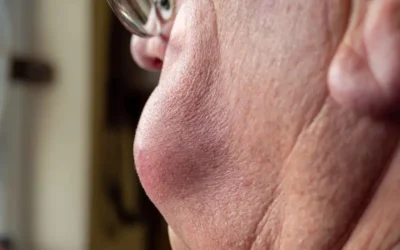Vaccinations are one of the important universally recommended preventive measures against a number of serious diseases and infections. The Centers for Disease Control and Prevention (CDC) recommends vaccinations from birth through adulthood to support a lifetime of protection against conditions such as influenza, pneumococcal disease, human papillomavirus, and hepatitis. Though the CDC estimated that last year’s vaccine effectiveness was just 42%, experts reiterate that vaccines are still the best protection against severe illnesses. There were several changes to influenza codes in 2016. Pediatricians, primary care physicians, and internists who administer vaccines and medical coding companies need to be ready report immunizations using new vaccine codes in 2018 and also know the guidelines for reporting their services correctly.
New and Revised Codes
The following new and revised vaccine CPT codes released by the American Medical Association (AMA) became effective July 1, 2017:
- New code (pending FDA approval)
90587 Dengue vaccine, quadrivalent, live, 3 dose schedule, for subcutaneous use. This new code is pending FDA approval. - Revised and resequenced codes
90620 Meningococcal recombinant protein and outer membrane vesicle vaccine, serogroup B (MenB4C), 2 dose schedule, for intramuscular use
90621 Meningococcal recombinant lipoprotein vaccine, serogroup B (MedB-FHbp), 2 or 3 dose schedule, for intramuscular use - Revised code
90651 Human Papillomavirus vaccine types 6, 11, 16, 18, 31, 33, 45, 52, 58, nonavolent (9vHPV), 2 or 3 dose schedule, for intramuscular use - New CPT code for 2018
90756 Influenza virus vaccine, quadrivalent (ccIIV4), derived from cell cultures, subunit, antibiotic free, 0.5 mL dosage, for intramuscular use
This new code, effective for claims processed with dates of service (DOS) on or after January 1, 2018, will be payable by Medicare.
Note: According to the American Academy of Pediatrics (AAP), some payers may accept CPT code 90749 (Influenza virus vaccine, quadrivalent (ccIIV4), derived from cell cultures, subunit, antibiotic free, 0.5 mL dosage, for intramuscular use) before January 1, 2018.
HCPCS code Q2039
The new influenza virus vaccine code (90756) is not retroactive to August 1, 2017. Claims will not be accepted for influenza virus vaccine code 90756 between the DOS August 1, 2017 and December 31, 2017.
During the interim period of August 1, 2017 through December 31, 2017, Medicare Administrative Contractors (MACs) are to use HCPCS code Q2039 (Influenza virus vaccine, not otherwise specified) to handle bills for the new influenza virus vaccine product (Influenza virus vaccine, quadrivalent (ccIIV4). Q2039 is already an active code.
Vaccine Product CPT Codes for the 2017-18 Flu Season
For all vaccines, a vaccine product code should be reported in addition to the appropriate immunization administration code.
90630 – Influenza, quadrivalent, split virus, preservative-free, intradermal
90674 – Influenza, quadrivalent, split virus, preservative-free, intradermal
90682 Influenza virus vaccine, quadrivalent (RIV4), derived from recombinant DNA, hemagglutinin (HA) protein only, preservative- and antibiotic-free, IM
90685 Influenza virus vaccine, quadrivalent (IIV4), split virus, preservative-free, 0.25 mL dosage
90686 Influenza virus vaccine, quadrivalent (IIV4), split virus, preservative-free, 0.5 mL dosage, IM
90687 Influenza virus vaccine, quadrivalent (IIV4), split virus, 0.25 mL dosage, IM
90688 Influenza virus vaccine, quadrivalent (IIV4), split virus, 0.5 mL dosage, IM
Trivalent
90656 Influenza virus vaccine, trivalent (IIV3), split virus, preservative-free, 0.5 mL dosage, IM
90658 Influenza virus vaccine, trivalent (IIV3), split virus, 0.5 mL dosage, IM
90673 Influenza virus vaccine, trivalent (RIV3), derived from recombinant DNA, hemagglutinin (HA) protein only, preservative- and antibiotic-free, IM
Immunization administration (IA) codes
90460
- Immunization administration through 18 years of age via any route of administration, w/ counseling by physician or other qualified health care professional; first vaccine/toxoid component
- Report 90460 if the patient receiving the influenza vaccine is 18 years of age or younger and receives counseling from a physician or other qualified health care professional (e.g., nurse practitioner).
- If both of the above criteria are not met, report the appropriate IA code from the 90471-90474 series. As per CPT guidelines, clinical staff (e.g., R.N., L.P.N.) do not meet the criteria for other qualified health care professional.
90471 – IA; one vaccine (single or combination vaccine/toxoid)
+90472 – IA; each additional vaccine (single or combination vaccine/toxoid) (List separately in addition to 90460, 90471 or 90473.)
90473 – IA; one vaccine (single or combination vaccine/toxoid)
+90474 – IA;;each additional vaccine (single or combination vaccine/toxoid) (List separately in addition to 90460, 90471 or 90473.)
AAP Guidelines on Coding for Influenza Vaccine
- Vaccine features
AAP says that providers should pay attention to the following when patients come in for a vaccine- Trivalent vs. quadrivalent
- Whether the vaccine contains a preservative
- Age and dosage
- Any other distinctive feature of the vaccines (e.g., intradermal, cell cultured)
- Reporting codes 90471-90474:
The AAP cautions that:- 90471 should be reported if only an injection of the influenza vaccine is administered.
- The influenza injection should be reported with 90472, if an influenza vaccine is administed in addition to other vaccines.
- Code 90471 or 90473 cannot be reported in conjunction with 90460. Therefore, if a patient receives multiple vaccines during a single encounter and there is counseling on all but the influenza vaccine, 90472 or 90474 should be reported in addition to 90460 and 90461 as appropriate.
- Reporting Non-age specific immunization administration:
- Report 90472 in addition to 90471 or 90473
- Report 90474 in addition to 90471 or 90473
- Do not report 90471 with 90473
- Other guidelines
The CPT code that is reported should be one that most accurately identifies the vaccine product administered. Factors to consider:-- Product (combination versus single component)
- Disease targeted (e.g., hepatitis B)
- Dosing schedule (e.g., 2-dose or 3-dose)
- Chemical formulation (e.g., polysaccharide or conjugate)
- Route of administration (e.g., subcutaneous or intramuscular
- Report ICD 10 code Z23: ICD 10 code Z23 should be reported for all vaccinations given during an encounter. If purpose of the visit is to vaccinate the patient and the physician does not address any other concerns, the claim should contain only diagnosis code Z23. If the patient receives vaccinations during preventive exams, multiple diagnosis codes including Z23 should be included.
The AAP points out that reporting an evaluation and management (E/M) service in addition to immunization administration codes depends on several factors. This is a concern when patients present outside of their routine well check to receive vaccines. Physicians can set up separate flu clinics where patients are given their annual influenza vaccines solely by clinical staff. With practices and clinics managing administration of the annual influenza vaccine, the support of an experienced medical billing and coding company can help providers report their services correctly and receive proper reimbursement.



